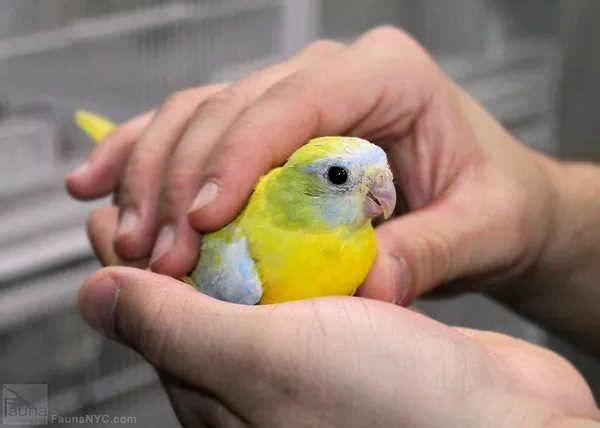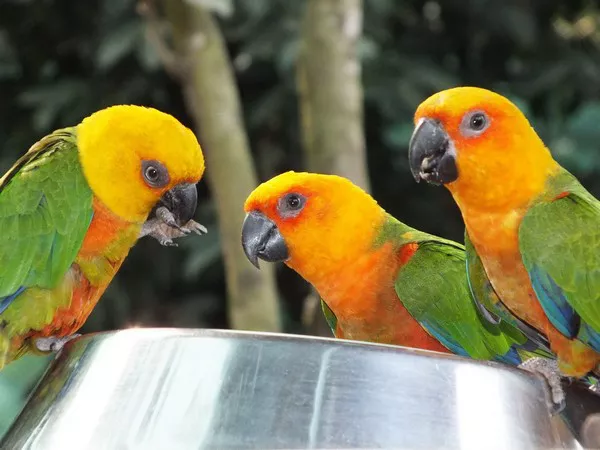African Gray Parrots (Psittacus erithacus) have long held a reputation for being some of the most intelligent birds in the avian world. Their exceptional cognitive abilities and complex behaviors have fascinated scientists, bird enthusiasts, and pet owners alike. In this article, we will delve into the fascinating world of African Gray Parrots to explore the depths of their intelligence, problem-solving skills, and remarkable communication abilities.
The Anatomy of Intelligence in African Gray Parrots
Before we delve into the specific facets of their intelligence, let’s examine the underlying factors that contribute to the high intelligence of African Gray Parrots.
Brain Size and Structure:
African Gray Parrots possess relatively large brains compared to their body size. Their brains are well-developed and boast a high degree of encephalization, a measure of intelligence based on brain size relative to body size. This anatomical feature is a strong indicator of their cognitive abilities.
Highly Developed Forebrains:
The forebrain, particularly the region known as the pallium, plays a crucial role in advanced cognitive functions in birds. African Grays have an exceptionally developed pallium, which is linked to their problem-solving skills and social interactions.
Complexity of Neurons:
The complexity and density of neurons in the brains of African Gray Parrots are notable. This neural architecture allows them to process and store a significant amount of information.
Cognitive Abilities
Problem Solving:
African Gray Parrots are renowned for their problem-solving abilities. They excel in tasks that require logical reasoning and the ability to make inferences. Researchers have conducted numerous studies demonstrating their capacity to solve puzzles, navigate mazes, and even comprehend cause-and-effect relationships.
Tool Use:
Tool use is a hallmark of intelligence, and African Gray Parrots have demonstrated this skill in the wild and in captivity. They use sticks, leaves, and even their own feathers to manipulate objects and obtain food. This adaptive behavior showcases their ability to innovate and adapt to different situations.
Vocal Mimicry:
African Gray Parrots are known for their exceptional vocal mimicry skills. They can mimic a wide range of sounds, including human speech, other birds’ calls, and even mechanical noises. This ability reflects their impressive auditory processing and memory capabilities.
Social Intelligence:
These parrots are highly social birds and exhibit complex social behaviors in the wild. They form strong bonds with their flock members and engage in cooperative activities. In captivity, they can develop deep connections with their human caregivers, demonstrating their capacity for social cognition.
Communication Abilities
Language Comprehension:
African Gray Parrots are renowned for their ability to comprehend and use human language. They can associate words with objects and actions, demonstrating a level of language understanding that few other non-human animals can match.
Vocal Repertoire:
These parrots have an extensive vocal repertoire, which they use for communication within their flock. This includes a variety of calls, squawks, and whistles that convey different messages. Their vocal flexibility allows them to communicate effectively in diverse situations.
Conversational Skills:
African Gray Parrots can engage in meaningful conversations with their human caregivers. They not only mimic words and phrases but also use them contextually to express desires, ask questions, and even engage in playful banter.
Conceptual Understanding:
Some African Gray Parrots have demonstrated the ability to grasp abstract concepts. They can count, recognize shapes, and understand basic mathematical principles, showcasing their higher-order thinking abilities.
The Emotional Intelligence of African Gray Parrots
Intelligence in African Gray Parrots extends beyond cognitive and problem-solving skills. They also exhibit emotional intelligence, which involves recognizing and responding to the emotions of themselves and others.
Empathy:
These parrots can display empathy by comforting distressed flock members and even understanding the emotions of their human caregivers. This emotional connection enhances their social bonds and demonstrates their ability to perceive and respond to others’ feelings.
Self-awareness:
Some African Gray Parrots have shown signs of self-awareness, a trait previously thought to be exclusive to humans and a few other animals. They can recognize themselves in mirrors, indicating a level of self-awareness and self-identity.
Conclusion
In conclusion, African Gray Parrots are indeed exceptionally intelligent birds. Their large brains, complex neural structures, and impressive cognitive abilities set them apart in the avian world. From problem-solving and tool use to sophisticated communication and emotional intelligence, these parrots continue to captivate researchers and enthusiasts alike.
Understanding the intelligence of African Gray Parrots not only enriches our appreciation of the natural world but also highlights the importance of responsible care and conservation efforts to ensure that these remarkable birds continue to thrive in their native habitats and as beloved companions for generations to come.
Recommended reading:
























